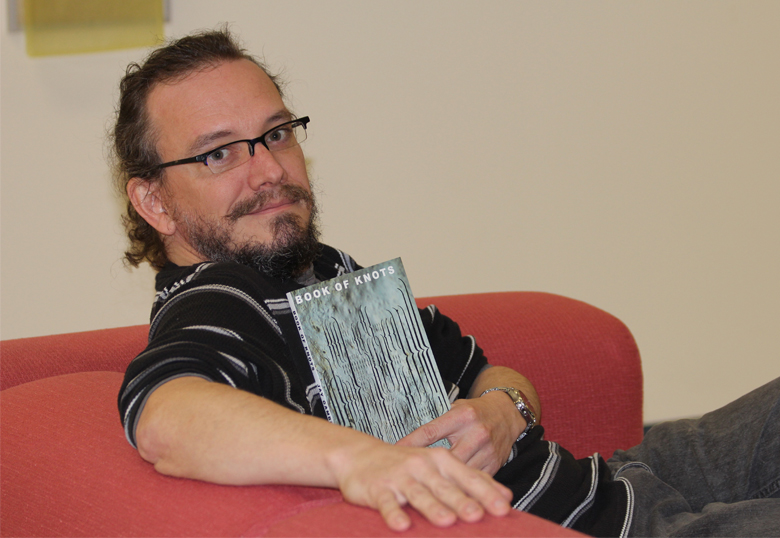When Jay Gamble sits down to write he uses stationery and a trusty fountain pen. Sometimes he even uses a vintage Underwood typewriter. He doesn’t shun computers or other modern devices but he maintains composition comes easier with a fountain pen in his hand.
So it’s kind of an anomaly then that his recently published book of poetry, Book of Knots, is rather unconventional. Gamble, an instructor in the University of Lethbridge English department, says the book was at turns fun to write and excruciating because he wanted to achieve a kind of absence or nothingness in each section of the book.

“This kind of poetry is more experimental, more avant garde. In a lot of ways it challenges a lot of the literary and poetic conventions. Reading it really does, in some ways, force us to challenge what we’ve come to expect from literature, language and poetry itself,” says Gamble.
Traditional poetry typically has verses but none of that will be found in Book of Knots. Gamble even calls into question the notion that someone’s holding the pen.
“Book of Knots challenges, in some ways, even the idea of the artist,” he says. “Some of these poems I didn’t even write, they’re computerized.”
The book contains five sections titled Bound, Gagged, In Violet, Ropes, And Chains. Take the commas out of that sentence and a phrase reveals itself, a phrase that Gamble promises to continue in his next books of poetry.
“This is what I consider to be a lifelong poem,” he says. “Nothingness got into my head early in my academic career and I haven’t been able to leave it.”
In Book of Knots, Gamble further explores facets of nothingness. Poems in the ‘Bound’ section are all one sentence, varying in length from the very short to the very long.
“It’s attempting to achieve a kind of absence through exhaustion, through exhausting possibilities and ideas,” says Gamble.
The ‘Gagged’ section features poems written with the absence of nouns. The poems in ‘In Violet’ explore interruption through the use of periods. The ‘And Chains’ section highlights a procedural poem as Gamble tried to absent himself as much as he could. He scoured Hamlet for the word ‘and.’ Then he took the word before and after ‘and’ and placed the three-word phrase into a poem.
“I put them together in such a way that they produced links, almost like links in a chain,” he says.
The ‘And Chain’ comes as the last section in the book, even though it was composed before ‘Ropes.’ For ‘Ropes,’ Gamble had one computer dictate ‘And Chains’ to another computer that then produced text from what it heard.
“I had a mechanized voice reading a procedural poem to a mechanized ear that then spat out the poem,” says Gamble. “A lot of the words stayed the same but then a sad face emoticon showed up, so just very strange things would happen. It’s eliminating me as an agent of the text and it challenges those ideas of what we’ve come to expect from the author as a figure of authority, of someone who sits alone in his garret apartment with a typewriter and comes down in the morning and says ‘Here’s my masterpiece.’”
Book of Knots is available at the U of L Bookstore, through Chapters, or by ordering online through BookThug. Gamble says he was especially pleased to have derek beaulieu, Calgary’s poet laureate, design the cover.
